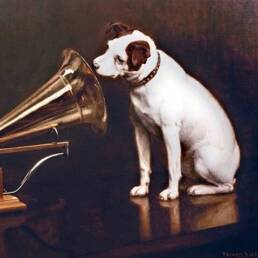You might remember Helen’s magic in the 1958 film Howrah Bridge, playing a Chinese seductress in the song ‘Chin Chin Chu.’ What you might not know, however, is that the inspiration for the song goes all the way back to a tale from the Arabian Nights.
The son of a rich businessman from Rangoon lands in Calcutta in search of his elder brother who has run off with the family’s precious heirloom. Ashok Kumar, who plays the younger brother, lands himself in an inn where he is mesmerized by a beautiful dancer.
Decked up in traditional Chinese attire, a young Helen Richardson sashays onto the screen and bamboozles everyone, while singing a tune that would go on to captivate audiences for generations to come – ‘Mera Naam Chin Chin Chu.’
Sung by Geeta Dutt on the words curated by Qamar Jalalabadi and put in tune by the legendary OP Nayyar, the song serves as an important plot point revealing the Calcutta-Chinese mafia’s hand in stealing the family heirloom.
The catch, however, is that the song’s inspiration may not have been wholeheartedly Chinese but instead related to a tale from ‘One Thousand and One Nights.’
Niharika Dinkar in her seminal work mentions that the song is a tribute to a London musical titled ‘Chu Chin Chow’, written and directed by an Australian named Oscar Asche. The story is loosely based on ‘Ali Baba and the 40 Thieves” from the Arabian Nights.
At the beginning of the 20th century, plays and musicals based on Oriental themes became huge draws for audiences. In 1911, Asche, trying to find his feet in the theaters of London, produced an adaptation of the Arabian Nights titled ‘Kismet.’

Written by Edward Knoblock, ‘Kismet’ fared well with audiences which motivated Asche to make more adaptations based on Middle Eastern folk tales. Now, what could captivate audiences more than the story of Ali Baba?
Asche invested around 5,000 British pounds in huge exotic sets, lighting, and costumes in the hope of staging a grand Oriental play, but there was a twist. Asche made certain plot changes which included the introduction of a wealthy Chinese merchant.
The inclusion of the Chinese merchant was perhaps Asche’s way of honoring those who came before him. Almost four decades before ‘Chu Chin Chow’ was conceived, on the other side of the world in Bombay, a theater troupe was established.
They called themselves the Victoria Theatrical Company. Within a short span of time, the troupe established itself as masters of the stage performing musicals and Shakespearean drama with ease.
The troupe went around the country showcasing many plays. While touring in Lahore around 1877, the troupe performed ‘Ali Baba aur Challis Chor’ in Chinese costumes and Chinese-styled sets, adding a new flavor to the age-old folk tale.
Why they did that is not precisely known, but their rendition of Ali Baba might have served as inspiration all those years after for Asche when he started working on his own version.
‘Chu Chin Chow’ premiered at His Majesty’s Theatre in London on August 3, 1916. It became one of the three hit musicals in London in the World War I era, and ran for almost five years receiving huge plaudits from audiences.
Later on, the musical would inspire a couple of movies of the same name, the first in 1923 by Herbert Wilcox and the second in 1934 by Walter Forde.
Isn’t it utterly fascinating how inspiration can take myriad forms, taking us on a journey from Howrah Bridge to a cave in the Arabian desert filled with treasures and guarded by forty thieves? But did we tell you the best part yet?
The 1934 film ‘Chu Chin Chow’ is said to have inspired comic book creator Stan Lee to create the Marvel comic character Fin Fang Foom, an extraterrestrial creature resembling a dragon that first appeared in Strange Tales #89, October 1961.
“When I was a kid, I loved going to the movies. When I say a kid, I mean 10, 11, 12 years old. And there was one movie I’d seen. I remember nothing about it except the name. It took place in China, I believe, and the name of the movie was Chu Chin Chow.”
Sources
Empires of Light, Vision, visibility, and power in Colonial India by Niharika Dinkar (Manchester University Press)
Image attributes
@wikicommons; Victoria and Albert Museum




